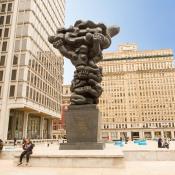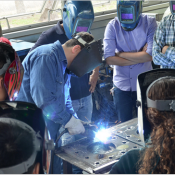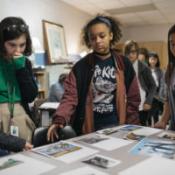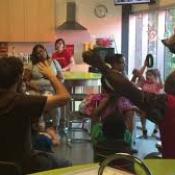We offer these data points and examples to share a few of the many ways in which Cultural Arts impacts our community.
IMPACT POINTS
Research shows residents are 50% more engaged in a community if they are part of cultural activities.
Research from the U.S. Bureau of Economic Analysis shows that the arts drive 4.9% of the U.S. GDP, generating $736.6 billion in 2015.
A cultural organization in a community has been shown to increase nearby residential property values by up to 20%.
Intra-community trust is a major component of livability. Research shows that by collaborating on art-making and beautification efforts that benefit a shared neighborhood, residents can increase feelings of trust and appreciation of each other.
Research from the National Endowment for the Arts shows that increased presence per capita of arts and culture non-profits and arts and entertainment establishments correlates strongly with increased livability.
Research from the U.S. Bureau of Economic Analysis shows that the arts drive 4.4% of the U.S. GDP. Between 2020 and 2021, the total economic value added by arts and cultural industries grew by 13.7 percent.
Williams, Deidre. 1995. Creating social capital : a study of the long-term benefits from community based arts funding. Adelaide, S. Aust.: Community Arts Network of South Australia.
"Arts and Culture Grow for Fourth Straight Year." (2018) Retrieved 16 May 2018 from https://www.bea.gov/newsreleases/general/acpsa/acpsanewsrelease.htm
Parkinson, A., Kahn, G., Peck, E., & Cohen, R. (2017). Business Contributions to the Arts, 2017 Edition (Research Report R-1630-17-RR) [Electronic version]. The Conference Board. Retrieved 29 January 2018 from http://www. americansforthearts.org/sites/default/files/TCB-Business-Contribution-to-theArts-2017.pdf
Williams, Deidre. 1995. Creating social capital : a study of the long-term benefits from community based arts funding. Adelaide, S. Aust.: Community Arts Network of South Australia.
Morley, E., Winkler, M., Zhang, S., Brash, R., & Collazos, J. (2014). The Validating Arts and Livability Indicators (VALI) Study: Results and Recommendations [Electronic version]. National Endowment for the Arts. Retrieved 17 February 2018 from https://www.arts.gov/sites/default/files/VALI-Report.pdf
Bureau of Economic Analysis. Retrieved October 11, 2023 from https://www.arts.gov/news/press-releases/2023/new-data-show-economic-ac…
EXAMPLES OF PRACTICE
Office of Arts, Culture, and the Creative Economy
Philadelphia created the first percent-for-art program, which requires developers to commission public art for their projects. In 2001, percent-for-art commissions totaled $2.8 million.
The Southeast Houston Arts Initiative was formed to transform its community through improvements to the physical environment by cultural expression projects. The four guiding principles were personal and environmental health, cultural history, urban
The Young Author Project, Deep’s introductory program, engages public middle school students with language and their stories to help them grow as learners, celebrate their lives and communities, and express themselves with skill, confidence, and
Our Community Arts Engagement initiatives serve families in the Austin area by providing all-ages arts, music, and cultural programs for kids, parents, and caretakers to enjoy together. Our programs are a fun way for people to become more actively
READING LIST
ORGANIZATIONS
Center for Cultural Innovation
The Center for Cultural Innovation (CCI) was founded in 2001 as a California 501(c)3 nonprofit corporation. Its mission is to support individuals in the arts—artists, culture bearers, and creative entrepreneurs—to realize greater self determination so as to unfetter their productivity, free expression, and social impact, which contributes to shaping our collective national identity in ways that reflect the diversity of society.
The Arts Impact Explorer was made possible thanks to the generous support of the Mellon Foundation and the National Endowment for the Arts. Additional support provided by the Doris Duke Charitable Foundation.
of the Arts + Social Impact Explorer






